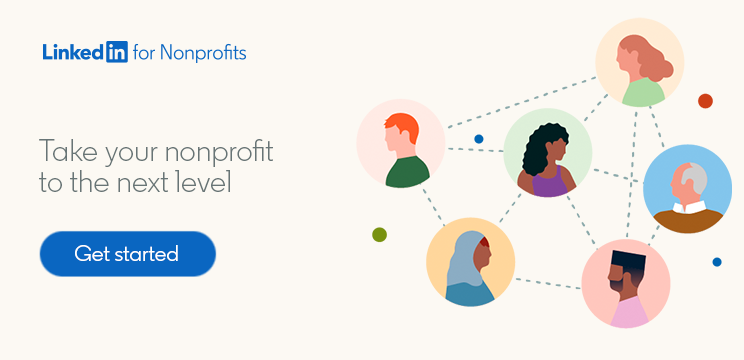
How Nonprofit Leaders Can Communicate More Empathetically to Build Stronger Teams
As a nonprofit leader, empathy is at the forefront of your organization. It drives your mission and informs your values. But in the workplace, the demands and stresses of the day can sometimes get in the way of empathetic internal communications, causing leaders to speak without thinking or miss the true meaning behind employees’ words.
In the short term, this can lead to misunderstandings, hurt feelings, and lost productivity. In the long term, if employees don’t feel seen and listened to—even if your intentions weren’t malicious—engagement and retention may suffer.
Luckily, it is possible to develop and internalize a more empathetic communication style. In her LinkedIn Learning course Communicating with Empathy, corporate empathy and communications consultant Sharon Steed breaks down how leaders can bake empathy into every interaction to build more collaborative and effective teams. Refining this skill can also help you communicate more thoughtfully and intentionally with donors, volunteers, and board members—strengthening your organization inside and out.
Here are six steps Sharon recommends to get started.
1. Practice listening to lay the foundations for empathetic communication at your nonprofit
Empathy is all about being able to actively take on another person’s perspective in order to better understand and engage with them. This is something nonprofits typically excel at, with many organizations’ missions hinging on their ability to not only identify the needs of a specific group but communicate those needs to a wider audience in a way that stimulates compassion and altruism.
However, this doesn’t always translate into empathetic workplaces. When you’re focused on changing the world, it can be easy to miss problems closer to home—like employee needs that are going unmet.
Improving your listening skills can help. The next time you’re having a conversation with someone (either at work or at home), practice listening intently. That doesn’t just mean limiting how much you’re talking—it means preventing your mind from wandering and really focusing on their words.
“Many of us get so wrapped up in what we want to say that we forget to listen to what the other person is saying to us,” Sharon says. “Practicing listening forces you to invest in what your partner in conversation is interested in.”
Even after the other person has finished speaking, don’t immediately share your thoughts. Sharon recommends first summarizing what they said and asking follow-up questions. This helps you ensure understanding, while also signaling that you were paying attention and care about what they have to say.
“When you give someone else the platform to express their thoughts, they're more likely to return the favor,” Sharon says. “They'll want to listen to not only what you have to say, but also implement your ideas into their grand plan.”
2. Identify different communication styles within your team and tailor your communication to them
In any work environment—nonprofit or otherwise—you’ll encounter a mix of introverts and extroverts, as well as people who fall somewhere in the middle (ambiverts). Recognizing the different communication styles of those around you—by simply asking them or having your team take a personality test like Myers-Briggs—and adjusting your own style accordingly can help you develop your communication skills and have more empathetic and productive conversations.
For example, Sharon points out that many introverts find group settings draining, so it can be helpful to speak to them one-on-one when possible. They may also not be a big fan of small talk, so a more direct approach may be highly effective. But be mindful of your tone, because some introverts may emotionally pull back if they sense negativity.
“Your non-verbal communication cues are going to run the show,” Sharon says. “Approach [introverts] with pleasantness and positive energy. If they think you’re angry, they’re not going to be too receptive to the conversation.”
Many extroverts, on the other hand, get energized in group settings and like to talk through their thoughts with others before arriving at a conclusion.
“Be prepared to give them the floor,” Sharon says. “They need to process their thoughts verbally, so give them the space.”
That said, extroverts may inadvertently dominate the conversation in group settings, so speak to them about this one-on-one if you notice it happening. Rather than framing it as a criticism, encourage them to take more pauses in conversations to listen and reflect on what their quieter colleagues have said. You can also adjust how you run meetings—like sharing an agenda ahead of time to let introverts gather their thoughts—to account for different communication styles.
Don’t be afraid to speak to people about their communication preferences, and encourage open discussion of this among the team to help everyone learn and act more inclusively. As Sharon points out, you have to first be aware of your coworkers’ needs before you can communicate empathetically with them.
3. Evaluate your own communication skills and style to identify your strengths and weaknesses
While it’s important to recognize the communication styles of others, it’s equally important to evaluate your own. It can be difficult to assess yourself objectively, which is why Sharon recommends asking a coworker who is not a close friend for feedback.
“Be sure to tell them that you're doing this because you want to improve the way you communicate with the team, so their honesty is valued,” she says. “The type of feedback that's going to be most valuable is how you make that person feel during any given conversation.”
Once they’ve shared their thoughts on how you communicate, categorize them into strengths and weaknesses. This will help you determine what areas you need to work on and what skills you can use to your organization’s benefit.
For example, if they mention that they always come to you first with complex problems because you’re a great sounding board, bear this in mind and make sure your team knows your door is always open. But if they say that it sometimes feels like you try to rush through a conversation to get back to your work, this could indicate that you need to work on your listening skills and avoid multitasking.

4. Manage your emotions during difficult conversations and be mindful of the emotions of other
When you need to initiate a difficult conversation, the way you prepare can shape the direction of the whole discussion.
Sharon advises against using a script, as it may make your words come across as impersonal and rehearsed. Instead, make a note of some major points you want to cover. Then, depending on whether the recipient is an introvert or an extrovert, tailor your message to help them best receive it.
“Give the listener a chance to process the information before you offer up a solution,” Sharon says. “If they need to talk through things for a couple of minutes, you definitely want to give them the space to do so.”
If you suspect the person may be very upset, consider scheduling the conversation for the very end of the day so that they don’t have to go back to work immediately afterward. If they’re likely to become flustered and frustrated, emphasize that you understand how they feel and would like to talk again once they’re feeling calmer. Practicing this kind of empathetic leadership will also help keep your own emotions in check and your calm will rub off on them.
Of course, if you’re at the receiving end of a difficult conversation, you won’t always have time to prepare. This can make it easy for your hurt or anger to cloud your judgment. But avoid the temptation to get defensive or interrupt and focus on first listening to what the person has to say.
“More often than not, this difficult conversation is happening because the person initiating has some sort of grievance involving you,” Sharon says. “They have something to say. They want to say those words to you and they want you to hear those words.”
Once they’ve finished speaking, take a deep breath to reset your emotions. Then, summarize what they said and verbally acknowledge that there was truth in it before discussing possible solutions.
“Summarizing shows that person that you listened, and acknowledging truths showed them that you really heard them,” Sharon explains. “You do not get to choose how you make someone feel. If your coworker or boss says that your actions have hurt or harmed someone, you must accept that as true before you can solve the problem.”

5. Admit your mistakes and find common ground when communication breaks down
Even the most empathetic communicators occasionally make missteps, like allowing a discussion about problems with a fundraising campaign to devolve into a heated argument. In these situations, one of the best ways to re-engage in the conversation from a place of empathy is to first acknowledge the mistake and apologize. This sets the stage for a calmer and more productive discussion.
Next, highlight the specific contributions of everyone involved to show you value their work and the project as a whole. This is effective in both group settings and one-on-one situations. Sharon recommends getting into the habit of doing this on a regular basis even when everyone is getting along.
“The more often that you do this, the more sincere it's going to be when you're flustered,” she says. “A bonus here is that when arguments do happen, you'll already have established that you value their work. And that's the easiest way to move past a failure of communication—expressing to people that they are worthy.”
Finally, find something that everyone can agree on—like the importance of launching the campaign on time or getting the messaging right—and reframe the conversation around that common theme. This can help you quickly diffuse any remaining tension to get things back on track.
Support your people as they support your cause
The additional pressures created by the COVID-19 crisis have made it more important than ever for nonprofit leaders to keep a pulse on the needs of their teams. But strengthening your communication skills and learning how best to put empathy into practice in your organization will also be valuable in the long run—helping you support your people so they can focus on driving your mission forward.
To learn more about how to develop this crucial leadership skill, check out Sharon’s full course on LinkedIn Learning.

